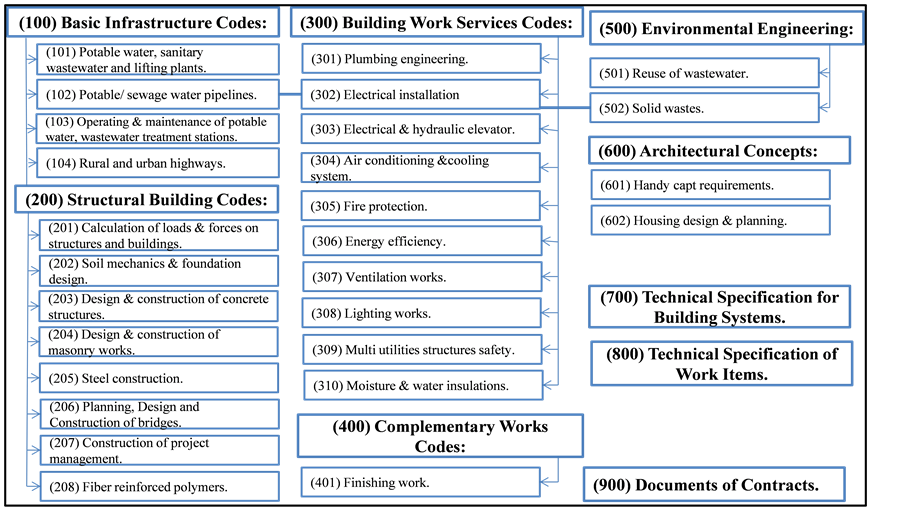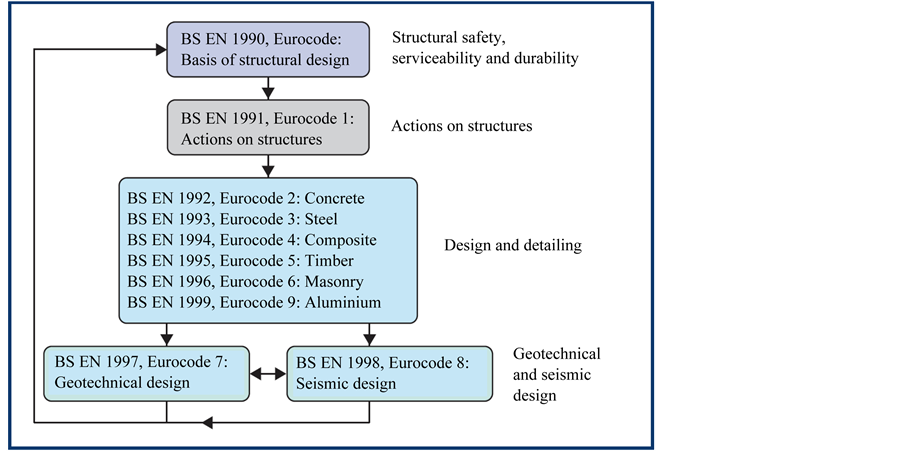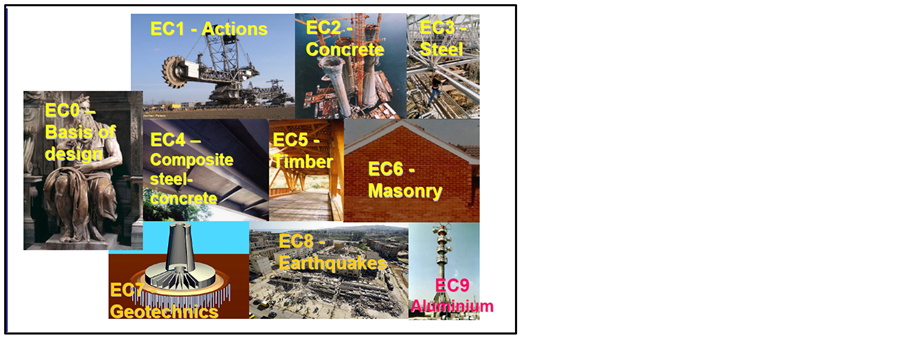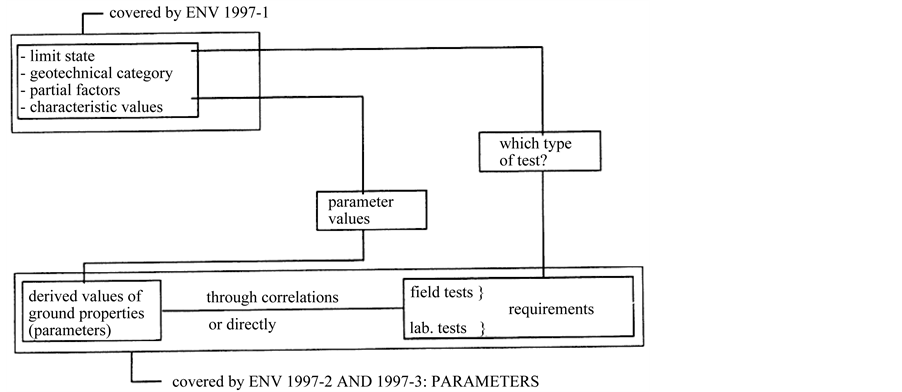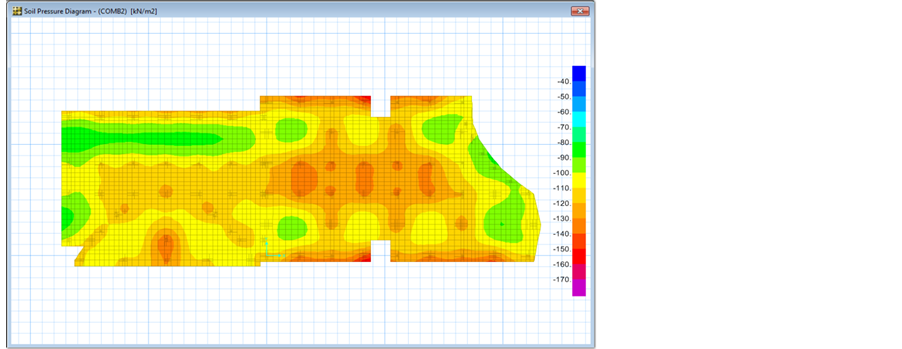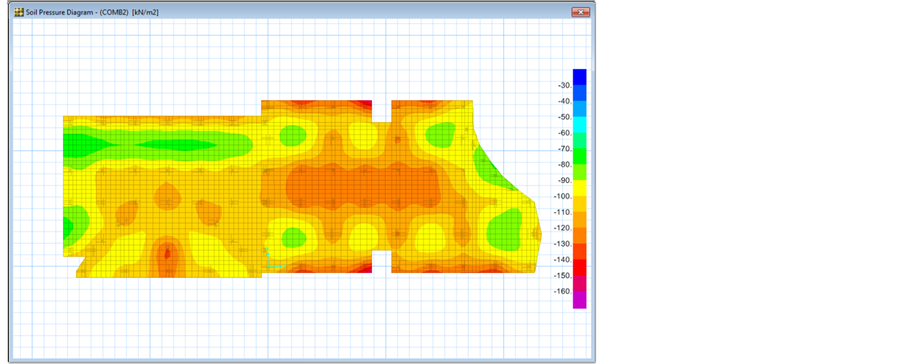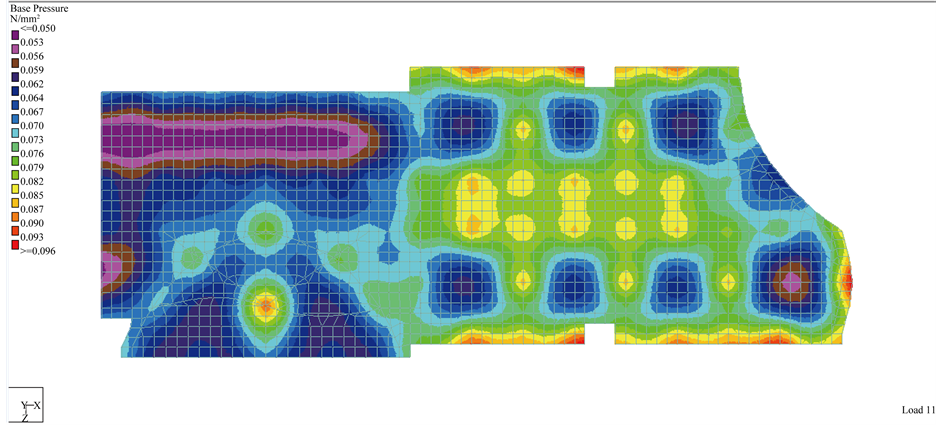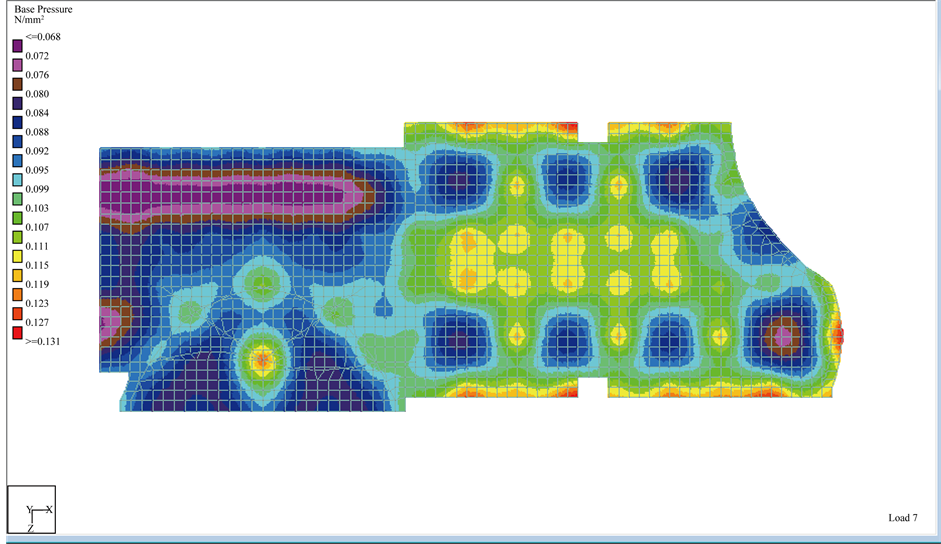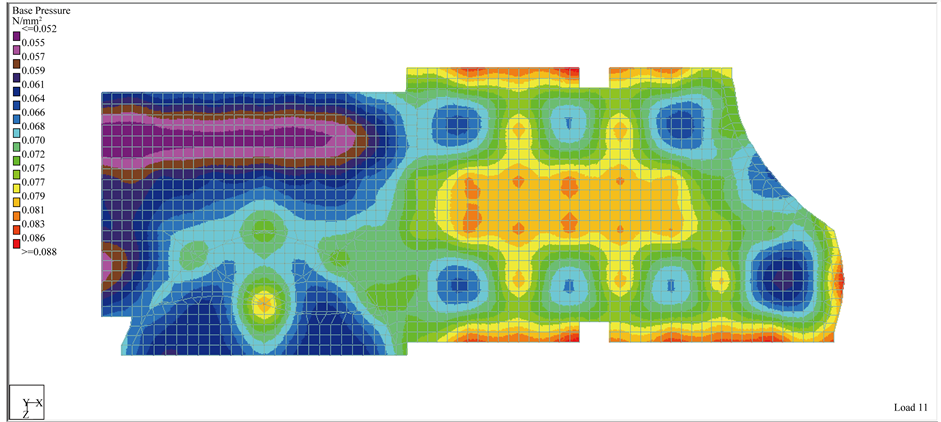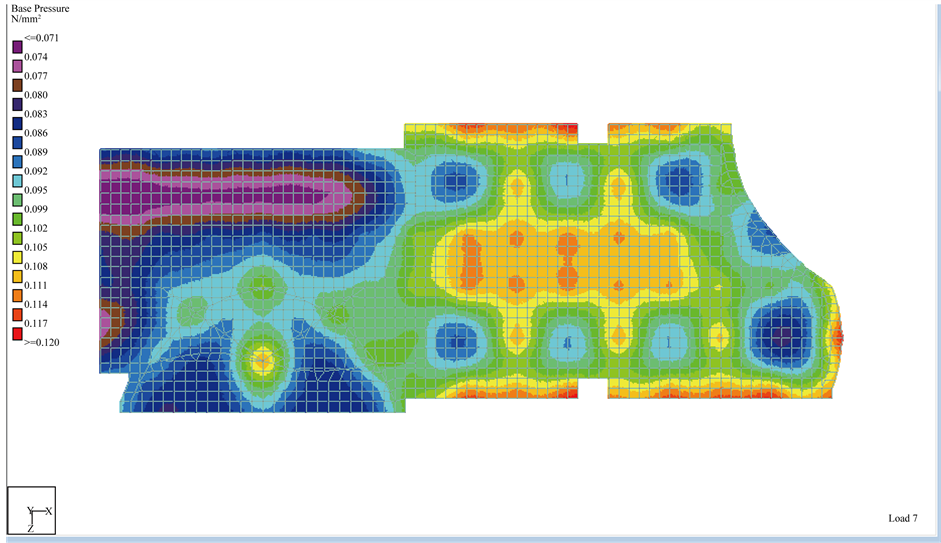Engineering
Vol.06 No.10(2014), Article ID:49672,22 pages
10.4236/eng.2014.610062
The Need to Develop a Building Code for Iraq
Entidhar Al-Taie, Nadhir Al-Ansari, Sven Knutsson
Department of Civil, Environment and Natural Resources Engineering, Lulea University of Technology, Lulea, Sweden
Email: Entidhar.altaie@ltu.se, nadhir.alansari@ltu.se, Sven.Knutsson@ltu.se
Copyright © 2014 by authors and Scientific Research Publishing Inc.
This work is licensed under the Creative Commons Attribution International License (CC BY).
http://creativecommons.org/licenses/by/4.0/



Received 20 July 2014; revised 20 August 2014; accepted 29 August 2014
ABSTRACT
Building Code is a legal document that provides a minimum level of safety and health for the constructions to make the public live in safe buildings. People recognize the importance of constructing the buildings in safe conditions, since the dawn of civilization. Many countries around the world were facing different kind of disasters such as fires, earthquakes, etc. These disasters made builders develop methods for safe construction to avoid any disaster. Later, these developments became codes and standards. Since the middle of the last century many countries established its local codes. This research represented a review of the importance of the codes with a short history for them. Furthermore, reviews for some national codes (Egyptian, Syrian and Arabia Saudi) were done as well as comparison between load’s correction factors, geotechnical requirements and materials used in concrete. Most of the national codes were highly based on the ACI, British and Germany codes and standards. In addition, a review and comparison were presented for International codes (American (ACI) and European (EC)) through a case study. EC code is becoming more common for the world. Eurocode gives more flexibility to the user to employ their own standards (national annex). To find the best suitable foundation design to be used in Iraq and the differences when using the American and European codes, a building model was designed and analyzed using STAAD Pro., and SAFE softwares for three locations (Mosul, Baghdad and Basrah). The combination loads used in the two softwares were for ACI and EC codes. Results obtained were very similar. The type of foundation to be chosen for Mosul location is spread or continuous. For Baghdad location the suitable type is raft and for Basrah the choice is raft and piles. In view of the fact that Iraq has no national code, engineers and designers were depending on the ACI and British codes and standards. It is very important to have an Iraqi code because it will improve the quality and safety of the design and construction of buildings as well as its economic value.
Keywords:
Codes, ACI, Standards, Loads, Eurocode, Correction Factors, SAFE Software, Bearing Pressure

1. Introduction
A code is a document covering a system of laws. Code of building is a document containing standardized requirements which specify the minimum acceptable limit of safety for buildings and non-buildings. These codes are based on the experience of engineers, experimental work and specific conditions and behavior. They are protecting the buildings against various risks like fire, structural collapse and amenity issues like ventilation, lighting, dampness, sound insulation and sanitation. Moreover, codes are significant tools for achieving society’s goals such as sustainability and energy efficiency. Moreover, codes are significant tools for achieving society’s goals such as sustainability and energy efficiency, addressing all the aspects of construction such as: safe exits, electrical, plumbing, seismic design, structural integrity and correct use of the construction materials. Building codes classify structures by applying and using various standards, as an example, schools and office buildings are in separate occupancy categories with various performance requirements [1] [2] . Codes have two categories which are safety codes and standards, and the product standards [3] .
A comparative work was made by Shkoukani, 1993, between Eurocode (EC2) and American Concrete Institute (ACI), for the design and analysis of a reinforced concrete rectangular cross-section with tension reinforcement. The results he obtained showed that the moment calculated by elastic analysis and partial safety factors used for loads and materials in EC2 code were smaller than those used in the ACI code. While, the amount of shear reinforcement which was calculated using the ACI code was smaller than the one calculated using EC2 code [4] . Jawad [5] , did a comparison of the design requirements (loading and materials) of the structural building ACI 318M-02, BS8110:1985, and Eurocode 2, 1992 codes. The comparison included the strength design requirements of constructional elements for safety provisions, flexural design, shear design and column design. He studied some numerical examples using the three codes. He recommended the EC2 because it was more liberal in strength design and partial factors of safety than the ACI code [5] . A comparison of seismic provisions of three seismic design codes, the American (IBC 2009 and ACI318-08M), Eurocode 8 (EC8) and The National Structural Code of the Philippines (NSCP 2010) codes was presented by Landingin, et al., (2013). Regular and irregular reinforced concrete frames were analyzed and compared for four types of storey building. Equivalent lateral force analysis response and spectrum analysis were also performed using SAP2000 software package. Five representative columns for each reinforce column (RC) frame structure were analyzed. Using EC8 the results of column axial load-bending moment interaction diagrams, were found to be conservative when compared to the NSCP 2010 and IBC 2009. The design and analysis of ordinary RC residential buildings with specific irregularity using EN8 provisions were considered to be safer, and therefore they were recommended in the conclusion by Landingin, et al. (2013) [6] .
A review and comparison will be presented for different types of national (Egyptian, Syrian and Saudi Arabia) and international (American and European) codes in this paper. Furthermore, Iraq does not have a national building code. For this reason an attempt had been carried out to find the best suitable foundation to be used in different parts of Iraq. To achieve this goal a building model was designed and analyzed using STAAD Pro., and SAFE software for three locations (Mosul, Baghdad and Basrah) in Iraq. The study would summarize the geotechnical requirements, the principal design requirements and materials used in concrete for all codes. Comparison was done using both ACI and EC codes to choose the suitable type of foundation for each location. Furthermore, part of this paper would be devoted to focusing on the suggested Iraqi Building code.
History of Building Codes
First code was written by King Hammurabi (3000 BC) during early civilization in Babel. Articles 228, 229, 230, 231, 232, and 233 of the code were specified the rules of payment and the punishments to the builders (If they cause any harmful or damages for persons who lived in the new building or in case the building was not properly constructed). These rules were representing the starting of safety requirements in the built environment [7] .
Emperor Nero developed master plan for idealized Roman city after burning in 64 ADs, because the constructions of Roma public buildings were of bad construction quality. In addition, the distances between buildings were cramped and they had poor sanitation. After burning, the constructions were done according to the master plan of Nero; principles regarding fire resistance and sanitation [7] .
Fires broke out near the Tower of London’s city in 1666 ADs, because the city was crowded with tightly spaced buildings and raw sewage flowing through open drains. Parliament started writing what is known as London Building Act for two years after that fire. The documents established the regulations for the buildings of London’s city only [7] .
Chicago city faced huge fire for two days during 1871 ADs. More than a quarter of the city buildings were destroyed. For that reason, most of the insurance companies threatened to leave unless developments should be done to the regulations of buildings. In 1875, rules for regulations of buildings and fire prevention were enacted [7] . On April 18, 1906, an earthquake hit San Francisco city and left it in ruins. Some parts of the city were destroyed by the fires that broke out after the earthquake. The scientific community was gathered to observe what had happened and they formed the building code organizations that still exist today. Organizations since then had been studied various structures after each earthquake to check their ability to withstand the events [3] [7] . In view of these disasters the regulations of constructions were improved and collected in code.
2. Review of Codes
2.1. National Codes
Most of the countries have their own national building codes. They are usually adopted and developed by governmental building institutes. Most of the codes depend on the international codes because the standards used in such codes fulfill the building requirements in many countries. Reviews for some of the different national codes in the Middle East region are given below.
2.1.1. Egyptian Codes
The first code in Egypt was published in 1956 [8] . It was dedicated for the reinforce concrete only. The government adopted the code in 1964, and established Housing and Building National Research Center (HBRC), to lead the research to develop the building’s design and materials used, to enact the codes [8] . In addition, it was the responsibility of that center to issue and develop the codes and specifications related to the construction industry. In 1980, the first copy of the code was printed and published. It included topics on concrete structures, soil mechanics, foundations and electrical connections for buildings. HBRC published various codes and technical specifications (Figure 1). Codes were improved every five years [8] . Egyptian codes specified the mini- mum requirements for design and construction of the buildings to provide safety and efficiency. They included the basics for design, and implementation of buildings, and material’s specifications. Moreover, they include inspections and quality control. The aim of the code is to provide safety requirements to the buildings without causing any damages, collapse and distortions [9] . Egyptian code is composed of nine portions, with four annexes (Figure 1). Most of the Egyptian standards for the construction field are now harmonizing with the
Figure 1. Egyptian code for building & construction [8] .
International European standards (ENV), in particular the seismic code. The codes are usually including all the criteria needed for engineering works [8] .
1) Geotechnical requirements
The geotechnical requirements are very important for the designers to define the appropriate and efficient foundations to be chosen for any construction for a suitable type of soil. Soils or rocks are materials that have no fixed properties like other engineering materials. Properties of the soils and rocks can be defined by collecting samples from the site and preform different types of tests on them to classify and define the soil properties.
Structural building codes 200 (Figure 1) is that part covers the structural building requirements. It has eight sub-portions. Soil mechanics and foundation design is sub-portion (202/3). It defines and explains the Geotechnical requirements (202) are: Site investigations (202-1); Laboratory tests (202-2); Shallow foundations (202-3); Deep foundation (202-4); Foundations in problematic soil (202-5); Foundations facing vibrations & dynamics loads (202-6); Retaining walls (202-7); Stability of slopes (202-8); Earthworks & dewatering (202-9) and Foundations on rocks (202-10). All the geotechnical and engineering information, details and requirements for soil, rocks, site studies (topographic, geomorphology, hydrology), field tests and basic and safe requirements for foundations design(shallow and deep) are given in these portions [9] .
2) Loads requirements for design (201)
These requirements exist in part 201(Structural building codes 200). The factors of safety (correction factors) for dead, live, wind and earthquake loads which are used for ultimate strength limit values are shown in Table 1 [10] .
3) Materials (203)
The materials that are used in concrete are presented in the sub-portion design and construction of concrete structures 203. These materials are reinforcement, cement, aggregates, water and admixtures. Furthermore, it specifies the rate of components according to the types and working conditions of the concrete. The materials are taken according to the Egyptian standards (ES). Specifying all types of cement to be used in concrete and testing (chemical, mechanical and natural) are tabulated in ES (4756-1/2006; 583/2005; 3071, 3072/1996; 474/1994; 2421/1993; 2149/1992; 2149/1992; 1658/1988). Water to be used in mixing of concrete should be clean and without any harmful materials such as oils, acids, organic maters and salts. The admixtures should not affect the bearing of concrete with time and should be conforming to ES 1899/1990. Steel Reinforcement: All types of steel reinforcement such as: bars, wires and welded plain wire which are to be used with the concrete are defined and should be conforming to ES 262/2000. The tensile test for the reinforcement should conform to ES 76/2001. Moreover, method of storage, and physical and mechanical property’s tests, concrete and aggregates tests, were included in the code [10] .
2.1.2. Syrian Code
Implementation of the buildings in Syrian used to depend on the experiences of engineers, before 1974. Syrian engineers association published rules to be followed in design of structural buildings and stone bearing walls, for the first time in 1974 [11] . However, designers were depending on the foreign codes because the rules were not enough for design work. Later, in 1977, Arab engineers union issued the Arab building code for design and implementation of reinforced concrete structures and it was adopted by the Syrian government. After that, Syrian engineers association issued many national codes which were adopted by the government (1992 1st edition issued; 1995 2nd edition issued with some developments; 1996, 1997 and 2000) [11] . Different appendixes issued for earthquake. Furthermore, evaluation and rehabilitation for the existing buildings and 2004 Last edition issued [11] . The code and its appendixes provided designers and engineer a good assistance and support in their work. In 2004 edition the code included all the details needed in modern constructions and software used for
Table 1. Loads factors and the alternative [10] .
analysis and design. Syrian code was developed every few years where new requirements were added such as earthquakes [12] . Syrian code had fourteen appendixes; each one specifies a requirement of different type for construction, as follows:
1. Loads.
2. Earthquake.
3. Drawings and details.
4. Evaluate and rehabilitation the existing buildings.
5. Foundations.
6. Retaining walls.
7. Tanks.
8. Precast and prestressed concrete structures.
9. Composite sections.
10. Bridges and floating bridges.
11. Minarets, chimneys and cooling towers in industrial facilities.
12. Flexor ceilings and crustaceans.
13. Bases of machineries.
14. Silos and hoppers.
In 2006, Syrian thermal insulation code was issued to decrease the energy used in the buildings, protecting the environment [13] . Furthermore, to provide minimum rules and judgments to be followed through the design and implementations of reinforce concrete, materials for buildings and tests methods. The purpose of the code is establishing investment and operation requirements for buildings [12] .
1) Geotechnical requirements
Site investigations, soil description and identification are the main requirements in any building design. The geotechnical requirements are part of foundation’s appendix No.5. The Appendix, defined all the conditions and recommendations to be followed in the design and implementation. Moreover, it addresses all types of foundations (shallow and deep foundations), loads affecting the foundations and the materials used such as: normal concrete, reinforce concrete, etc. It has defined the requirements of durability and permanence for foundations against collapse and unbalances, and the limits of total and differential settlement. The topics of the appendix are (Materials properties; Evaluation of loads; How to determine safety requirements and stresses distribution on soil beneath foundations; How to determine a soil modulus of elasticity beneath foundations; Distribution of soil reaction beneath foundations; Distribution of soil reaction beneath foundations; Distribution of soil reaction beneath foundations; Classification of foundations and the state of used; Steps of how to choose foundations; General requirement for design of foundations; Base general requirements in stresses calculations on soil and foundation’s analysis; Foundations design and Foundations for machines [14] . All field tests in Syrian code are based on finding the soil modulus of elasticity beneath the foundations. The geotechnical reports should be prepared by specialist engineers in geotechnical works. Nothing mentioned about the laboratory tests and procedures. The standards to be followed in the tests were not sited as well [14] .
2) Loads requirement for design
The loads affect buildings or any constructions to be considered in the design are dead, live, wind and earthquake loads. The correction factors used to define the ultimate load’s values are shown in the following equations [15] :




The alternative factors used to calculate the ultimate loads used are:



where: U is the ultimate load, G is a dead load, P is a live load, W is a wind load, S is an earthquake load, E is earth pressure and T is creep or settlement or weather change.
3) Materials
All materials properties depend on local or international standards mentioned in the code [14] :
The types of cement used are Portland (normal, rapid solidification, white, etc.). Cement must follow the standards that are specified in the term of the project. Usually, aggregate are taken from deserts or riverbeds or sea beaches or from crushed rocks. The aggregate grains must be solid, hard and clean and their strength must be greater than double the strength value for concrete. Water used in concrete mixture and cleaning aggregate must be clean and empty from harmful materials such as oil, acids and salts, which will affect the concrete or reinforcement. Rate of soluble chlorides and sulfate salt are ≤0.5 g/letter and ≤0.3 g/letter respectively. Drinking water is suitable to be used, while sea water is not allowed to be used. Admixtures must have not harmful effect on the concrete and steel reinforcement. Concrete mixed with admixtures must not change the mechanical properties values of the concrete. Steel reinforcement: Different types of reinforcements are usually used with concrete. Their types, mechanical properties and diameters are defined in the code.
2.1.3. Saudi Building Code (SBC)
Saudi Building Code (SBC) is a set of legal, technical and administrative regulations and requirements that specify minimum standards of construction for building to ensure public health and safety. In 2000, a national committee in Saudi Arab study a number of codes to choose a base code for the Saudi buildings. International Building Code (IBC) was chosen and permission from International Code Council (ICC) was taken to include any or all part from IBC codes and standards in the SBC code [16] .
The code took into consideration the cultural and social environment, the climatic and natural conditions, and soil types and material’s properties in the Kingdom. First edition of the code was published in 2007. It included thirteen portions of requirements (Table 2). The purpose of the Saudi Building Code (SBC) it is to provide public safety and health, sustainability and environmental protection [16] .
1) Structural-soil and foundations (SBC 303)
The geotechnical requirements and minimum requirements for footing and foundation systems in areas not subjected to water pressure by wave and wind action or scour are included in this code. The topics contained in the code are: Site investigations; Excavation grading & fill; Allowable load bearing values of soil; Spread footing; Foundation walls; Retaining walls; Combined footings and mats; Design for expansive soils; Design for collapsible soils; Design for sabkha soils; Design for vibratory loads; Dampproofing and waterproofing; General requirements for pier & pile foundations; Driven pile foundations; Cast-in-place concrete pile foundations and Pier’s foundations [16] .
Table 2. Parts of the Saudi building code [16] .
The code also clarifies the cases that do not need site investigations such as: load on foundation less than 50 kPa, unexpected Problematic soil beneath the foundation, unavailable vibration or dynamic load on the building and unsuspected cavities beneath the foundations of the building.
In addition, all the requirements are to be specified, sampling must be done from different types of soils (expansive, collapse, and sabkha kind). All laboratory tests should be done according to ASTM standards. Furthermore, the code defined the settlement limits for different types of soil and foundations [16] .
2) Loads requirements (301)
The Saudi Building Code provides minimum load requirements in the design of buildings and other structures. The loads and appropriate load combinations were developed to be used together. Basic combination loads were used as shown in Table 3 [16] .
3) Materials (304)
All materials used in concrete must be quality specified, and are as follow [16] :
Cement: Each type of cement specification such as Portland cement is specified by (ASTM C150); blended hydraulic cement is specified by (ASTM C595M) and expansive hydraulic cement specified by (ASTM C845). Aggregates must have the following specifications: concrete aggregates and lightweight aggregates for structural concrete according to (ASTM C33) and (ASTM C330) respectively. Water used in mixing concrete must be clean and free from oils, alkalis, acids, salts, organic materials, or other substances deleterious to concrete or reinforcement. The mixing water should be prepared and tested in accordance with (ASTM C109). Specification for air-entraining admixtures for concrete must conform to (ASTM C260). Chemical admixtures for concrete specification must conform to (ASTM C494) or the specification for chemical admixtures used in producing flowing concrete is conforming to (ASTM C1017). Fly ash or other pozzolans used as admixtures must conform to the specification of (ASTM C618). While, specification for ground granulated blast-furnace Slag for use in concrete and mortars must conform to (ASTM C989). Specification for Silica fume used as an admixture must conform to (ASTM C1240). Steel reinforcement: The types of deformed reinforcing bars for concrete using are deformed and plain billet-steel bars specification must conform to (ASTM A615M), and Low-alloy steel deformation and plain bars with specifications that conform to (ASTM A706M). While, the plain reinforcement types are: plain bars for spiral reinforcement. It should conform to the specifications of (ASTM A615M; or ASTM A706M) and plain wire for spiral reinforcement must conform to the specification of (ASTM A82).
Egyptian, Syrian, and Saudi Arabian codes impose loads safety factors related to designing assumption and inaccuracy of calculation, constructional inaccuracies, and possible unusual load increases [5] :
Design load = characteristic load × partial load factor of safety
As shown in Table 4, the Egyptian and SEC codes are using the same safety factors. These codes are dependent on the American code, while, Syrian code has other factors of safety related to Germany’s standards.
Table 3. Load combinations and alternatives equations [16] .
Where: D: Dead load; L: Live load; E: Earthquake load; W: Wind load; R: Rain load; T: Self-straining force; H: Load due to lateral earth pressure, ground water pressure, or pressure of bulk materials; F: Load due to fluids with well-defined pressures and maximum heights; Lr: Roof live load; f1 = 1.0 for areas occupied as places of public assembly, for live loads in excess of 0.5 kN/m2, and for parking garage, live load; f1 = 0.5 for other live loads.
Table 4. Comparison between national codes for strength design requirements for geotechnical requirements and materials.
2.2. International Codes
International codes are available and are used in most of the countries around the world. The most widely used are the American (ACI) and the European (EC) codes. Local country codes usually rely on one of these codes.
2.2.1. American Codes
United States of America issued two international codes, International Building Code (IBC) and Building code requirements for structural concrete and commentary (ACI-318) [17] . The paper will present preface for the IBC, and will focus in details on the ACI-318.
1) IBC code
First code in United States was authored in 1700’s AD. George Washington and Thomas Jefferson encouraged the development of constructions arrangements to prepare minimum standards to ensure safety and health. First code developed in United States was in 1905 by the Fire Underwriters Association [18] . They planned to make it national code and were focusing on the safety of the buildings and people inside them. The code was called National Building Code and it aimed on safety of people (fire alarms, isolation of hazards and fire exits). Since 1900, there were three models of building codes to be used in the United States, and developed by three regional code groups [19] :
・ Building Official Code Administrators International, Inc. (BOCA). This code was used on the east coast and throughout the Midwest of the United States.
・ International Conference of Building Officials (ICBO). This code was covered the west coast of the United States.
・ Southern Building Code Congress International, Inc. (SBCCI). The code was used in the southeastern of the United States.
The codes were effective and responsive to the local regulatory needs. In 1994, the three national groups combined their efforts and formed the International Code Council (ICC) and developed non limitation’s code. First issue of the International Building Code (IBC) was in 1997. The final edition of the International Building Code of (IBC) was issued in 2000, and made development of previous codes. The National Fire Protection Association (NFPA) initially joined ICC in a collective effort to develop the International Fire Code (IFC) [19] .
The code’s references were taken from the previous codes. Furthermore, including the following International codes: International Plumbing, International Mechanical, National Electric, and various National Fire Protection Association standards codes [18] [19] . The code is comprehensive for all types of buildings and constructions; and for all types of materials used in constructions.
2) ACI 318 (Building code requirements for structural concrete and commentary)
Code is a document collecting many practice standards provided to the architects and engineers [20] . History of any organization represents a reflection of the ideals and acts of organized groups within it. These activities were a revision to meet changed conditions and have formed the American Concrete Institute (ACI). The history of ACI is closely tied with the history of concrete technology developments [21] [22] .
1904: The joint committee on reinforced concrete was established and produced several drafts for concrete code.
1905: National association of cement users become ACI.
1909-1914: ACI committee 318 was established to develop a concrete code and it published a concrete design code.
1930: ACI 318 requirements became the only document in the USA dealing with concrete design.
1963: ACI 318-63 issued documents for both Working Stress Design (WSD) and Ultimate Strength Design (USD) requirements.
1971: ACI 318-71 issued containing USD and WSD as appendixes, ACI 318 was meant Building Code Re- quirements for Reinforced Concrete.
1989: Names of the code were changed to the Building Code Requirements for Structural Concrete.
2002: Issues of the code made procedure known as the unified design procedure and the previous requirements became the appendix B. The WSD was taken out from ACI 318 [21] [22] :
ACI 318 is the basic document for concrete building’s design in USA, and it covers design materials and structural construction concrete. Furthermore, it specifies the resistance factors, the design resistance and the load factors. The code was adopted by the IBC and become legal. Every three to four years, ACI 318 code is up- dated according to the development in the field of engineering. The code covers both reinforcing and pre- stressing steel and precast and prestressed concrete. Additionally, the resistance factors are increased by 10% - 15% during the last thirty years [23] . ACI code cover twenty three topics that deals with design and implement of concrete, with six appendixes presenting all the requirements needed, as [24] :
¾ General requirements.
¾ Inspection.
¾ Materials.
¾ Durability requirements.
¾ Concrete quality, mixing and placing.
¾ Formwork, embedment and construction joints.
¾ Details of reinforcement.
¾ Analysis and design―general considerations.
¾ Strength and serviceability requirements.
¾ Flexure and axial loads.
¾ Shear and torsion.
¾ Development and splices of reinforcement.
¾ Two-way slab systems.
¾ Walls.
¾ Footings.
¾ Precast concrete.
¾ Composite concrete flexural members.
¾ Prestressed concrete.
¾ Shells and folded plate members.
¾ Strength evaluation of existing structures.
¾ Earthquake-resistant structures.
¾ Structural plain concrete.
・ Appendix A: Strut and tie models.
・ Appendix B: Alternative provisions for reinforce and prestressed concrete flexural and compression mem- bers.
・ Appendix C: Alternative load and strength reduction factors.
・ Appendix D: Anchoring to be concrete.
・ Appendix E: Steel reinforcement information.
・ Appendix F: Equivalence between SI-metric, MKS-metric and U.S. customary units of nonhomogeneous equ- ations in the code.
(1) Geotechnical requirements
Geotechnical requirements are taken from IBC code, soils and foundations portion, because ACI does not give these requirements. All the useful requirements to define the structure and identify the soils are presented in this part. Furthermore, the types of foundations that should be chosen in the design for a suitable type of soil are also presented. The portion contains the followings topics [25] :
・ Geotechnical investigations (1803): Classification and identification of soil are conforming to ASTM D2487, ASTM D4318, ASTM D422 and ASTM D4829 standards respectively.
・ Excavation, grading and fill (1804): They are defined according to ASTM D1557 standards and the Controlled Low-Strength Material (CLSM).
・ Dampproofing and waterproofing (1085): The requirements of the story of above a grade plane, under floor spaces, follow the requirements of FEMA/FIA-TB-11. Ground water control, Dampproofing the mortar used comply with ASTM C887.
・ Presumptive load-bearing values of soil (1806): It concerns determining the load combinations, presumptive load-bearing values and lateral load resistance.
・ Foundation walls, retaining walls and embedded posts and poles (1807): Masonry foundation walls with reinforcement and the concrete masonry comply with ASTM C90. While, clay masonry comply with ASTM C62 or ASTM C216.
・ Foundations (1808): The criteria for foundation design, design for expansive soils, slab-on-ground foundation, stabilization, and foundation on or adjacent to slopes, pools, and concrete foundations are presented in this section.
・ Shallow foundation (1809): All requirements for design and construction for shallow foundations (such as supporting soils, stepped footings, depth and width of footings, frost protection and location of footings) are listed. Moreover, plain concrete footings, masonry-unit footings, steel grillage footings, timber footings, and footing seismic ties are also listed.
・ Deep foundations (1810): The analyses and design details and installations of deep foundations are given. These details include geotechnical investigation, use of existing deep foundation elements, and special type of deep foundations. The analysis of lateral support, stability, settlement, seismic design, and group effects are also stated. Design conditions, composite elements, driven piles, helical piles, casings, materials (concrete, seismic hooks, pre-stressing steel) should conform to ASTM A416. While, allowable axial load and load tests should be conforming to ASTM D1143 or ASTM D4945. Allowable frictional resistance, uplift capacity of single deep foundation element, uplift capacity of grouped deep foundation element, load bearing capacity, and allowable lateral load are given. Dimensions of deep foundation elements such as precast, cast- in-place or grouted-in-place, cased, uncased, micropiles, steel, H-piles, steel pipes and tubes and helical piles are also tabulated. Moreover, Cast-in-place deep foundations: design cracking moment, required reinforcement, placement of reinforcement, seismic reinforcement and materials should conform to ASTM A615 Grade 60 or 75 or ASTM A722 Grade 150 and heaved elements, enlarged base cast-in-place elements, hollow-stem angered cast-in-place element, socketed drilled shafts, micro-piles, helical piles, and special inspection, all the details of implementation are listed in section 1810 [25] .
In addition, it is present the types of tests and the equipment and its calibrations. Some of these (as mention above) requirements follow the American Society for Testing and Materials (ASTM) [25] .
(2) Strength and serviceability requirements
The demand is considered as the strength required, while the supply as the strength furnished. The required strength (U) could be expressed under the forms of design loads or their related moments, forces and shears. For dead, live, wind and other loads the ACI code specifies design requirements, shears and moments be obtained from service loads by using the following relations [24] [26] :




where: D = Dead load.
L = Live load.
W = Wind load.
H = Loads due to weight and pressure of soil, water in soil or other materials.
E = Load effects due to earthquake.
T = Cumulative effect of temperature, creep, shrinkage, differential settlement and Shrinkage-compensating con- crete.
The above relations are basics and important for any design for different constructions.
(3) Materials
Testing must be done to any materials used in concrete constructions to define if the materials are of the specified quality. Materials are [24] :
・ Cement: Different types of cement are used in buildings (such as Portland, blended hydraulic, expansive hydraulic, hydraulic, flash and natural pozzolan, slag and silica fume). All types of cement must conform to the relevant specifications of ASTM C150, ASTM C595, ASTM C845, ASTM C1157, ASTM C618, ASTM C989 and ASTM C1240 respectively [24] .
・ Aggregates added to cement to produce concrete of adequate strength and durability. Aggregates are conformed to each of the following specifications: normal weight (ASTM C33) or lightweight (ASTM C330). Coarse aggregate must have maximum size due to one of the following: 1/5 the narrowest dimension between sides of forms, or 1/3 the depth of slabs, or 3/4 the minimum clear spacing between individual reinforcing wires or bars, bundled tendons, bundles of bars, or ducts [24] .
・ Water used in mixing concrete must conform to (ASTM C1602). Drinking water is also suitable to be used for mixing concrete. Water has excessive impurities that may not affect the setting time, volume stability and concrete strength and may cause corrosion of reinforcement. Water use in mixing concrete must have limited quantities for sulfates, chlorides, solids and alkalis [24] .
・ Admixtures that are used to reduce water and time setting modifications must conform to (ASTM C494). Types of admixture are air-entraining (must conform to ASTM C260), flowing concrete (must conform to ASTM C1017) and expansive cement use in concrete (must conform to ASTM C845) [24] .
・ Steel reinforcement includes deformed and plain reinforcements. Deformed reinforcement bars have different types such as: Carbon steel conforms to ASTM A615; Low-alloy steel conforms to ASTM A706; Stainless steel conforms to ASTM A955 and Roll steel and axel steel conforms to ASTM A996. While, plain reinforcement types are plain bars for spiral reinforcement must conform to (ASTM A615, A706, A955, or A1035); plain wire for spiral reinforcement must conform to (ASTM A1064), and headed studs and its assemblies must conform to (ASTM A1044) [24] .
2.2.2. European Code (Eurocode)
Eurocodes are tools for safety of buildings and reliability enhancement. The objectives of Eurocodes are to improve civil engineering works and compliance of building, putting a framework to harmonize the technical specifications for construction products and being the basis for specifying contracts.
Since 1971 until 1990 the code committee was working to obtain a draft of technical documents set as international inquiry. During the period 1990-2006, the European committee for Standardization (CEN) has converted the first Eurocodes into provisional European standards (EN Vs), and then into European standards (EN). From 2007, until now, the Eurocodes are in a continuous evaluation process [27] . Eurocode structure includes 58 documents of standards, as shown in Figure 2 [28] .
Each part of the Eurocodes has a symbol and number to explain the purpose of the standard as shown in Figure 3.
European code is based on philosophy of limit?states, including both criteria of serviceability and strength. They are called resistance and load factors design. Moreover, the code includes the reduction factors of material strength. The uses of load factors are to increase the working loads.
1) Geotechnical requirements (EC7)
The requirements for the geotechnical design to be considered are as follows [31] :
・ Nature and size of the structure with any special requirements.
・ Conditions of its surroundings such as: neighboring structures, traffic, utilities, vegetation, hazardous chemicals, etc.
・ Ground conditions and groundwater situation.
・ Regional seismicity.
・ Influence of the environment like hydrology, surface water, and seasonal changes of moisture.
Eurocode for geotechnical design is divided into three parts: ENV 1997-1, ENV 1997-2, and ENV 1997-3.
Figure 2. Eurocodes structural [29] .
Figure 3. The Eurocode family [30] . EC0―Basis of design; EC1―Actions; EC2―Concrete; EC3―Steel; EC4―Composite; EC5―Timber; EC6―Ma- sonry; EC7―Geotechnical design; EC8―Earthquakes; EC9―Aluminum.
A. ENV 1997-1 (Geotechnical designed code): It is includes nine sections, the topics of these sections are: General; Basis of Geotechnical Design; Geotechnical Data; Supervision of Construction, Monitoring and Main- tenance; Fill, Dewatering, Ground Improvement and Reinforcement; Spread Foundations; Pile Foundations; Retaining Structures; Embankments and Slopes.
Three categories are important, when establishing geotechnical design requirements, they are the following [31] :
1. Category 1: The procedure is adequate only if there is no excavation under the water table. Structures are simple and based on experience and qualitative geotechnical investigations.
2. Category 2: Conventional types of structures and foundations are covered. Require quantitative geotechnical data and analysis to ensure that the fundamental requirements will be satisfied. Routine procedures for field and laboratory testing, design and execution may be used. Types of structures complying with geotechnical category are spread and raft foundations; piled foundations; walls and other structures retaining or supporting soil or water; excavations and ground anchors and other tie-back systems; bridge’s piers and abutments and embankments and earthworks; tunnels in hard, non-fractured rock and not subjected to special water tightness or other requirements.
3. Category 3: This category includes structures or parts of structures, which are not following the limits of Geotechnical category (1 and 2). Structures involve abnormal risks, unusual or exceptionally difficult ground or loading conditions and those in highly seismic areas.
B. ENV 1997-2 (Design assisted by laboratory testing): It is determined primarily for geotechnical projects of category 2 (which is explained above). It also covers all the requirements for all laboratory tests such as classification, identification and description of soils; chemical testing; strength testing; Compaction and Permeability testing, etc. Furthermore, it includes classification, swelling and strength tests for rock’s material. Furthermore, it includes classification, swelling and strength tests for rock’s material as well as calibration for tests equipment’s and all detailed information on tests and methods [32] .
C. ENV 1997-3 (Design assisted by field testing): The third part of the geotechnical code explains the field testes principles and application rules. Field tests for soil and rocks, including Cone penetration and piezcone tests CPT (U), Pressuremeter test (PMT), Standard penetration test (SPT), Dynamic probing test (DP), Weight sounding test (WST), Field vane test (FVT), Flat dilatometer test (DMT), Rock dilatometer test (RDT), Plate loading test (PLT) and Groundwater measurements in soils and rock. Moreover, it explains the ways of sampling soil and rocks.
The three subjects of design, laboratory and field tests are related to each other as shown in Figure 4 [33] .
2) Basis of structural design
Eurocode EN1990 is explains the requirements and principles for safety, durability and serviceability for structures. The basic requirements of a structure are influences (serviceability) and actions (resistance, durability) are suitable for design purpose. The code includes normative part, and informative part which is for information purposes. The structural Eurocodes design is based on two limit states. They are the ultimate limit, and the serviceability limit states. The ultimate limit state requirements are subdivided into five broad categories as shown in Table 5. Each category has set of partial factors’ values that are connected to each other’s and must be added in corresponding design calculations, as shown in Figure 5 [34] [35] :
Figure 4. The link between ENV 1997-1 & ENV 1997-2 and 3.
Table 5. The categories of ultimate limit state [34] .
Figure 5. Ultimate limit states [35] .
The calculations steps in foundation design are carried out according to STR and GEO are actions, materials and resistance. However, the dead and live loads in Eurocode have other names. The dead loads become permanent actions while the live loads become imposed actions, including snow, wind, etc. Load combinations called combinations of actions. EN 1991 is a part that explains the actions (permanent and imposed) on structures [36] . Part of the values that are related to safety matters in the Eurocode should be decided by the National Annex. The National Annex contains the information about the parameters left open in the Eurocode for national choice, which known as Nationally Determined Parameters (NDPs). These parameters are related to geographical or climatic conditions such as snow map or wind map or way of life. Therefore, different levels of protection may prevail at a local or regional level. The actions in Eurocodes are classified as [37] :
1. Variation in time: Divided into permanent G, variable Q, and accidental A.
2. Origin: They are direct (e.g. forces), and indirect (e.g. temperature).
3. Spatial variation are fixed (e.g. self-weight), and free (e.g. predeformation).
4. Nature and/or structural response: They are static, and dynamic.
EN 1997 covers two approaches for determining the combination of actions for STR ultimate limit state. For the first approach the following equation is to be used:

For the second approach is using the following equations are to be used:


where: ∑ = Implied “the combined effect of”.

ξ = A reduction factor for unfavorable permanent actions G.



P = Represents actions due to prestressing.
The partial and combination factors values can be taken from the National Annex of EN 1997. Eurocode gives three approaches (DA1, DA2, and DA3) for determining the loads (Table 6). Using of these approaches depends on many factors related to loads or actions A, material’s properties M, and resistance of soils R. These approaches are used to determine GEO & STR Ultimate Limit States as shows in Table 6.
Future of Eurocodes can be summarized [38] :
・ New materials and/or techniques such as glass, carbon fibers and fiber reinforced polymers (FRP).
・ New concepts and/or requirements. Basic works requirements are Mechanical resistance and stability, Safety in case of fire, Hygiene, health and the environment, Safety in use, Protection against noise, Energy economy and heat retention, and Sustainable use of natural resources (durability and recyclability of the construction work).
・ New societal needs (assessment of existing structures).
3) Materials
Materials used in concrete must be suitable and not harmful ingredients. These materials are [39] [40] :
・ Cement: General suitability establishing for common cement conforming to EN 197-1. Sulphate resisting Portland cement conforming to BS 4027:1996. Fly ash for concrete conforming to I.S. EN 450-1:2005.
・ Aggregates must conform to EN 12620:2002. Maximum aggregates size usually limited to 20 mm, but they are depending on the particular application. Other types of aggregates called semi-inert such as filler aggregate conforming to EN 12620 and pigments conforming to EN 12878. Other types of aggregate like pozzolanic or latent hydraulic are established for fly ash, silica fume, and ground granulated blast furnace slag are conforming to EN 450; prEN 13263 and BS 6699:1992.
・ Water: Water use for mixing and recycled from concrete production should conform to EN 1008:2002.
・ Admixtures use must conform to EN 934-2:2000 (including Annex A).
・ Reinforcing steel: The requirements for the properties of the reinforcement should conform to EN10080.
ACI code and Eurocode impose safety factor’s loads as shown in Table 7.
3. Case Study
To find the best suitable foundation design to be used in Iraq and the differences when using the American and European codes, a Building model was designed and analyzed using STAAD Pro., and SAFE softwares for three locations (Mosul, Baghdad and Basrah). The combination loads used in the two softwares were for ACI and EC codes. The design of the building and foundation was done according to ACI and EC in the both softwares. The bearing capacities used in the softwares were obtained from field and laboratory tests done in three locations (Mosul southern, Baghdad in middle and Basrah in southern) of Iraq [41] . Results obtained from the two softwares are shown in Table 8. Figures 6-9 show the bearing pressure distribution under the foundation for Baghdad location as an example.
Table 6. Equations given in Eurocode 7 for combining partial factors [34] .
*On structural actions; **On geotechnical actions.
Table 7. Comparison between international codes for strength design requirements.
Table 8. Comparison between results using ACI and EC for bearing pressure in STAAD Pro. and SAFE softwares.
Figure 6. Bearing pressure distribution for average bearing capacity value from SAFE software for ACI and EC codes.
In all cases the design was done by used ACI and EC codes. The base pressure values under the foundation obtained from the two softwares for the two codes were very close. The foundation to be chosen according to the results tabulated in Table 8, for Mosul locations is spread or continuous depending on the both codes. In Baghdad locations the type of foundation to be chosen is spread and raft for the both codes. While, for Basrah locations the type of foundation to be chosen is raft and pile using both codes.
Figure 7. Bearing pressure distribution for average bearing capacity value from STAAD Pro. software for ACI and EC codes.
4. Suggested Code for IRAQ
In the eighties of the last century, an Iraqi code was suggested by the committee of Iraqi code/Ministry of planning. The code was based on the American and British codes. It was covering only the design and implementation of reinforce concrete constructions. In 1987, the code was suggested to be used optionally for two years [42] . The government did not adopt the code legally to be used. For that reason, Iraqi designers and engineers did not use the code, and were depending on ACI and British codes in their works for the last forty years [42] . In 2013, the Ministry of Construction and Housing adopted the Arabic codes. These codes are issued by the Council of Arab Ministers of Housing; during this year (2014), the Iraqi ministries started to adopt these codes in their buildings works. The codes includes ten parts for the soil investigations and foundation’s design only, with other parts for different construction works such as structural steel and concrete, electrical, mechanical, etc. [43] .
Figure 8. Bearing pressure distribution for worst bearing capacity value from SAFE software for ACI and EC codes.
4.1. Importance of Establishing Iraqi Code
The code is important to provide a requirement for safety and healthy buildings for the public. Moreover, codes present requirements to enhance the durability for existing buildings and implementing them in economic and high quality way.
The code should be cover all the requirements needed in the design and implementation of any construction such as buildings, bridges, dams, etc. Furthermore, it should cover the geotechnical requirements. These requirements are an important part in the code to ensure that the constructed of buildings will be implemented in a safe and suitable site. The code is to ensure safe, durable and economical buildings in different regions of Iraq. It is also important to make sure that the designers and engineers will cover the following points:
1. To choose the suitable design for a given site based on soil properties such as bearing capacity, shear strength, etc.
2. To perform suitable dimensions of foundation (depth & width) for a given load.
3. Selecting most suitable type of foundation based on building loads and type of soil.
4. Specifying a suitable mixture of concrete excavations (percent of gravel, sand, and cement).
5. Designing the most economical building based on unit price of materials used in construction (steel and concrete).
4.2. Outline Concerning Geotechnical Engineering Part of the Suggested Code for Iraq
Code is a legal document, which present all the requirements that should be considered during the design, con-
Figure 9. Bearing pressure distribution for worst bearing capacity value from STAAD Pro. software for ACI and EC codes.
struction, and maintenance of buildings. Soil is the most important factors that should be considered for the design for any construction. Defining soil properties is the main step in the design procedure of any structure. To present the basics of building code for Iraq, the following requirements should be considered:
1. Soil survey should be conducted for different regions of Iraq. This includes field tests and collecting, reviewing of the literature.
2. Based on the geology and soil properties, Iraq can be divided into three zones (north, middle, and south).
3. Exiting information about the soil in Iraq (e.g. Buringh, 1960) indicates that there are different types. It is suggested that in each zone suggested in 2 above different samples are to be collected and tested.
4. Field and laboratory tests are required for both disturbed and undisturbed soil samples. These tests are to identify important soil properties that can affect the foundation. Table 9 below shows the required soil tests and the type of soil sample (disturbed or undisturbed) [44] [45] .
Table 9. Types of tests to identify soil properties [44] [45] .
5. General soil map for the main regions of Iraq to be prepared that can be used as a guide to identify the soil types and different properties of soil. This will help in foundation’s design of different buildings at the studied sites.
5. Discussion
Building codes are legal laws and standards to provide minimum requirements for health, safety and welfare to the public. The historical review presented different disasters and accidents that made the codes existed in different countries. Hammurabi code was the first to put regulations for safe constructions.
Most of the codes which were defined and used in the Arabic countries depend on British and Germany’s standards, or American codes.
Saudi Arabian had its own code since (2008). It is one of the best National codes. The code includes all the requirements for the design and construction of modern buildings and materials. It also, includes requirements for the existing buildings. All these requirements were depending on the international building code (IBC) and American concrete institute (ACI). It includes some national requirements such as type of Saudi soil and local maps for earthquake. Furthermore, it collects requirements of modern buildings and materials.
International codes (ACI and Eurocode) cover all the requirements in details. Eurocode is better because it covers all the requirements for design and constructions for different types of building modern materials as well as the ordinary materials (concrete, steel, wood, etc.). Moreover, it contains national annex (national determined parameters NDPs).
Eurocodes became known since 1990. Before that, many countries around the world were familiar with British code and standards, but now they are part of the EC. Now, eighteen European countries adopted the Eurocodes to be used in the design and implementation instead of their national code. EC using three approaches in the design. These are: materials properties, action loads, and soil resistance. Later, Some Arabic countries tried to harmonize their code with EC codes like Egypt. EC codes have adopted new materials and techniques. European countries gave flexibility to use local national standards to obtain suitable and economical buildings.
There is no special code in Iraq for the design and construction of building. For that reason, engineers and designers are depending on different codes and standards such as American and/or British. In the case study, both the ACI and EC codes were used for the building model design and analysis by two softwares (STAAD Pro. and SAFE). The results obtained from the two softwares for the bearing pressure for three locations in Iraq shown in Table 7 were almost the same for both codes. According to the results obtained, spread or continuous are recommended for Mosul locations. Spread and raft foundation is recommended for Baghdad locations, while raft and pile is recommended for Basrah locations.
6. Conclusions
The first code that defined the regulations for safe of buildings in the history was Hammurabi code. Saudi Arabian code is the best national code within the Middle East because it includes all the requirements for the design and construction of modern buildings and materials as well as the requirements needed for the existing buildings. Moreover, it includes especial parts for Saudi conditions such as soil and earthquake maps.
Eurocode covers all the requirements for design and constructions for different types of building and modern materials as well as the ordinary materials (concrete, steel, wood, etc.). Furthermore, it contains national annexnational determined parameters NDPs. For these reasons the Eurocode is the best international code. Also, the code includes the British code and standards which are familiar to many countries around the world.
According to the case study performed on Iraq, the designers are recommended to use either ACI or Eurocode. In the designed model, both codes (ACI and EC codes) were used for determining the bearing pressure for three locations (Mosul, Baghdad and Basrah) in Iraq. The results show that the values of bearing pressure in the both codes are similar. Moreover, the type of foundation to be chosen for Mosul location is spread or continuous. For Baghdad location the suitable type is raft while for Basrah location the choice is raft and piles. It is believed that Iraqi Government should establish its own code to provide minimum requirements for the safety and economy for the buildings that suites the local environment in Iraq.
References
- Natural Hazard Mitigation Insights (2005) The Benefits of Statewide Building Codes. A Publication of the Institute for Business & Home Safety. http://scd.hawaii.gov/HazMitPlan/chapter_6_appK.pdf
- Building Code (2013) Chapter 14. http://www.co.ozaukee.wi.us/DocumentCenter/Home/view/315
- Cote, A.E. and Grant, C.C. (2008) Codes and Standards for the Built Environment. Chapter 3, Section 1, 51-66. http://www.nfpa.org/~/media/files/forms%20and%20premiums/fire%20protection%20handbook/codesfph.pdf
- Shkoukani, H.T. (1993) General Rules for Design of Reinforced Concrete Structures According to EUROCODE No.2 Comparative with the ACI. The First Palestinian Engineering Conference, Nablus, November 1993, 239-255. http://scholar.najah.edu/sites/default/files/conference-paper/general-rules-design-reinforced-concrete-structures-according-eurocode-no2-comparative-aci-code.pdf
- Jawad, A.A.H. (2006) Strength Design Requirements of ACI-318M-02 Code, BS8110, and Eurocode 2 for Structural Concrete: A Comparative Study. Journal of Engineering and Development, 10, 136-150.
- Landingin, J., Rodirigues, H., Varum, H., Arede, A. and Costa, A. (2013) Comparative Analysis of RC Irregular Build- ings Designed According to Different Seismic Design Codes. The Open Construction and Building Technology Journal, 7, 221-229. http://dx.doi.org/10.2174/1874836801307010221
- Yeager, M. (2013) History of Building Codes, Buyer’s Choice Home Inspection, Thoroughness and Accuracy Matters. www.buyerschoiceinspections.com/history-of-building-codes
- Salama, A.E. (2006) Egyptian Codes for Design and Construction of Buildings. Building the Future in the Euro-Me- diterranean Area, Workshop, 27-29 November 2006, Varese. http://elsa.jrc.ec.europa.eu/eurocodes2006/pdf/pres210.pdf
- The Standing Committee of the Egyptian Code (2001) Egyptian Code for the Design and Implementation of Concrete Structures. Housing & Building National Research Center, Al Tjaria Press, Cairo.
- The Standing Committee of the Egyptian Code (2007) Egyptian Code/ for Soil Mechanics and Design and Implementation of the Foundations. Housing & Building National Research Center, Al Tjaria press, Cairo.
- Nassif, S.I. (2011) Evaluating the Values of Some Factors and Seismic Requirements. Given by the Seismic Syrian Code, Damascus University, College of Civil Engineer. http://www.geocities.ws/mazen_alhalabi/Naseef.pdf
- Syrian Engineers Union (2004) Syrian Arab Code for the Design and Implementation of Reinforced Concrete Structures. 3rd Edition, Engineers Union, Damascus.
- NERC (2007) Building Thermal Insulation Code in Syria. Engineers Union, Damascus.
- Syrian Engineers Union (2008) Appendix 5 for the Syrian Arab Code for Foundations, Implementation of Reinforced Concrete Structures-Loads on Buildings. Engineers Union, Damascus.
- Syrian Engineers Union (2006) Appendix 1 for the Syrian Arab Code for the Design and Implementation of Reinforced Concrete Structures-Loads on Buildings. Engineers Union, Damascus.
- Saudi Building Code National Committee (2007) Saudi Building Code. 1st Edition, Saudi Arabia. http://faculty.ksu.edu.sa/ashuraim/Documents/SBC306C_FEB_2008_FINAL.pdf
- Ghosh, S.K. (2013) The Concrete Provisions of the 2012 IBC and ACI318-11. Building Safety Journal, 31-35. http://www.skghoshassociates.com/sk_publication/Ghosh_article_Feb_BSJ.pdf
- FEMA (2001) What Is a Building Code. Federal Emergency Management Agency & Central United States for Earthquake Consortium. www.cusec.org/publications/mitigation/whatearebuildingcodes.pdf
- McFann, G.J. (2013) The History of Building Codes. TPREIA. www.tpreia.com/historyofcodes.html
- ACI Committee 318-08 (2008) Building Code Requirements for Structural Concrete and Commentary. American Concrete Institute, Farmington Hills.
- American Concrete Institute (2013) History of ACI. www.concrete.org/historyofACI/ACI.pdf
- Stehly, R. (2009) ACI 318-08, Requirements for Structural Concrete. http://www.concrete.org/Chapters/GetChapterDocument.aspx?DocID=53344
- Nowak, A.S. and Rakoczy, A.M. (2007) Reliability-Based Calibration of Design Code for Concrete Structures (ACI 318). University of Nebraska-Lincoln. www.ibracon.org.br/eventos/54cbc/cobertura/ACIcalib10-10-12.pdf
- ACI Committee (2011) Building Code Requirements for Structural Concrete and Commentary. American Concrete Institute, Farmington Hills. www.concrete.org210.42.35.80/G2S/ewebeditor/uploadfile/20110806224616634.pdf
- International Code Council (2012) 2009 International Building Code. First Printing, Dallas. https://law.resource.org/pub/us/code/ibr/icc.ibc.2009.pdf
- Assakkaf, I. (2002) Rectangular R/C Concrete Beams: Tension Steel Only, Introduction to Structural Design. Department of Civil and Environmental Engineering, University of Maryland, College Park. www.assakkaf.com/courses/ENCE355/Luctures/part1/chapter2a.pdf
- Calgaro, J.A. (2006) The Eurocodes History and Present. Workshop of Building the Future in the Euro-Mediterranean Area, 27-29 November 2006, Varese. http://elsa.jrc.ec.europa.eu/eurocodes2006/pdf/pres090.pdf
- SSBond, A. and Harries, A. (2008) Decoding Eurocode 7―Basis of Structural Design. Taylor & Francis, London. www.decodingeurocode7.com
- Bound, A.J., Brooker, O., Harris, A.J., et al. (2006) How to Design Concrete Structures Using Eurocode 2. The Concrete Center, Michael Burbridge Ltd., Maidenhead. http://www.civilworx.com/Pdfs/How%20to%20design%20concrete%20structures%20using%20Eurocode%202.pdf
- Calgaro, J.A. (2008) Eurocodes a Tool for Building Safety and Reliability Assessment. EU-Russia Cooperation on Standardization for Construction, Moscow. http://eurocodes.jrc.ec.europa.eu/doc/Moscow08/Moscow08_9_Calgaro2.pdf
- European Committee for Standardization, NVE 1997-1 (1999) Geotechnical Design-Part1: General Rules. CEN National Members, Brussels.
- European Committee for Standardization, NVE 1997-3 (1999) Geotechnical Design―Part 2: Design Assisted by Field Testing. CEN National Members, Brussels.
- European Committee for Standardization, NVE 1997-3 (1999) Geotechnical Design―Part 3: Design Assisted by Field Testing. CEN National Members, Brussels.
- Orr, T. (2010) The Concepts of Eurocode 7 for Harmonized Geotechnical Design in Europe. Trinity College, Dublin. http://doktoranci.pwr.wroc.pl/pliki/pokl/orr1.pdf
- Smith, I. (2013) Retaining Walls and Geotechnical Design to Eurocode 7. Edinburgh Napier University. www.ice.org.uk/../retaining-walls-and-geotechnicaldesign-to-eurocde
- NSC (2008) Loads and ULS Load Combinations to the Eurocodes. www.steelconstruction.com/wp/wp-content/uploads/digi/0803NSCmar08/index.html/30/
- Formichi, P. (2008) Eurocode 1-Actions on Building Structures. EU-Russia Cooperation on Standardization for Construction, Moscow. http://eurocodes.jrc.ec.europa.eu/doc/Moscow08/Moscow08-9-Formichi.pdf
- Calgaro, J.A. (2008) The Eurocodes General Overview―Past, Present and Future. EU-Russia Cooperation on Standardization for Construction, Moscow. www.setra.equipement.gouv.fr
- EFNARC (2002) Specification and Guidelines for Self-Compacting Concrete. Association House, Farnham. www.efnarc.org
- European Committee for Standardization ENV 1992-1-1 (2004) Eurocode 2: Design of Concrete Structures-Part 1-1: General Rules and Rules for Buildings. CEN national Members, Cairo.
- Al-Taie, E., Al-Ansari, N. and Knutsson, S. (2014) Effect of Bearing Capacity on Designing Foundations in Iraq Using STAAD Pro-v8i. Engineering, 6, 292-303. http://dx.doi.org/10.4236/eng.2014.66033
- Code Committee (1987) Iraqi Building Code Requirements for Reinforced/ CODE 1/87. 1st Edition, Concrete Building Research Center, Scientific Research Council, Ishbeelia Press, Baghdad.
- Council of Ministries of Housing and Construction Arabs (2003) United Arab Codes for the Design and Implementation of Buildings, League of Arab States. House of the Republic of Journalism, Cairo.
- Lambe, T.W. (1951) Soil Testing for Engineers. John Wiley & Sons, Inc., New York.
- Das, B.M. (2009) Soil Machines Laboratory Manual. 7th Edition, Oxford University Press, New York.


